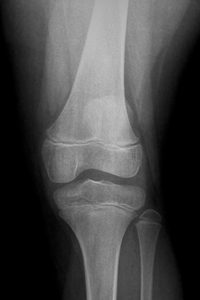In the U.S., about 38 million kids ages 5 through 18 play an organized sport each year, which gives travel physical therapist and travel nurse professionals a reason to smile and be wary at the same time. Participating in sports is not only a great way to develop their skills and get in much-needed exercise, it also teaches kids how to socialize and be part of a team. Yet every now and then, a parent’s phone rings and someone tells him or her that their child was injured during team practice or a game.
For most parents, the number of physical and social benefits greatly outweighs the risk of sports-related injuries. With that being said, according to the Centers for Disease Control and Prevention, more than 2.6 million children ages zero to 19 are treated in the emergency department each year for sports- and recreation-related injuries.
These injuries range from scrapes and bruises to serious musculoskeletal injuries. Here are some of the most prevalent types of injuries:
Sprains and strains
As they taught you in travel therapy or travel nursing 101, there is a difference between a sprain and strain. A sprain is a stretch or tear of a ligament – the fibrous band of connective tissue that joins bone to bone. Because ligaments are used to stabilize and support the body’s joints, athletes who put pressure on them may face this type of injury, and according to the National Institute of Health, an ankle sprain is the most common athletic injury.
A strain, meanwhile, is an injury to a muscle or tendon. Tendons are the fibrous cords of tissue that attach muscle to bone. Whereas acute strains are caused by a direct blow to the body, excessive muscle contraction or overstretching, chronic strains are the result of overusing muscles and tendons. This is often from prolonged, repetitive movements such as kicking a soccer ball or pivoting on one’s knee to turn while playing football.
People who have a history of sprains and strains become more at-risk for the injury to happen again. Also, those who are overweight or in poor physical condition have a greater chance of these problems.
Stress fractures and tendonitis
Travel physical therapist professionals may work with patients who have suffered from repeated motion injuries. The most typical are stress fractures – a hairline fracture of the bone that has been subjected to repeated stress – and tendonitis, which occurs from overuse of muscles and the supporting tendons. In fact, lateral epicondylitis is specifically nicknamed “tennis elbow” since the condition affects roughly 40 to 50 percent of athletes who play racquet sports. Medial epicondylitis, in turn, is termed “golfer’s elbow”.
Although some of these injuries don’t always show up on X-rays, they can cause severe pain and discomfort. Staff will want to develop individualized rehabilitation plans to help the damaged spot heal properly and fully. The injured area typically gets better with the RICE rule: rest, ice, compression and elevation.
Young athletes who utilize the same body part day in and day out may experience stress fractures or tendonitis, though the latter most frequently occurs in older adults.
Growth plate injuries
In some sports accidents, kids may endure an injury to their growth plates. The growth plate is the area of developing cartilage tissues at the end of the long bones in growing children and adolescents. It regulates and helps determine the shape and length of mature bones. The long bones in the body include:
- upper leg bone (femur)
- lower leg bones (tibia and fibula)
- foot bones (metatarsals and phalanges)
- long bones of the hand and fingers (metacarpals and phalanges)
- both bones of the forearm (radius and ulna)
If growth plates are affected, medical staffing should refer kids to an orthopedic surgeon or a doctor who specializes in bone injuries.

